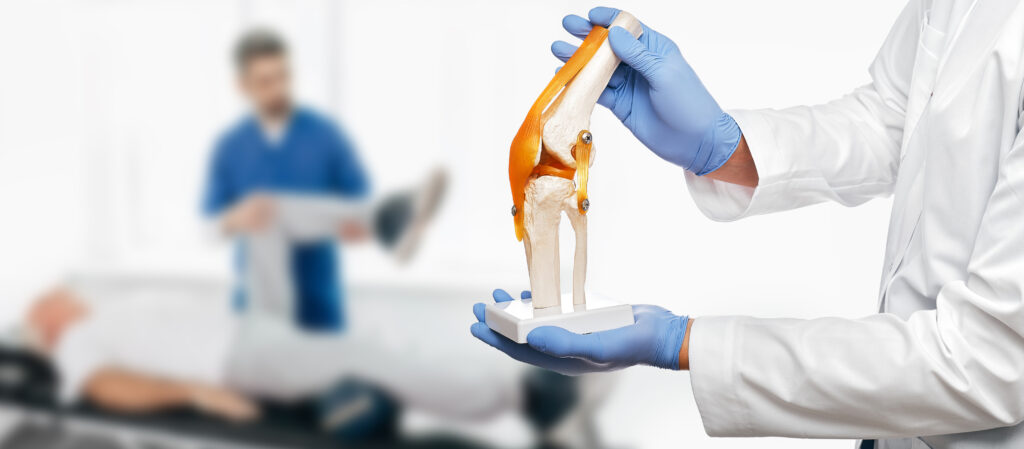
Orthopaedic Treatments: A Comprehensive Guide to Enhancing Bone and Joint Health
Orthopaedic treatments can help to improve the health of your bones and joints. From physical therapy to surgery, orthopaedic treatments can help you manage pain, improve mobility, and enhance your quality of life. This article will provide you with a comprehensive guide to orthopaedic treatments and how they can help to improve your bone and joint health.
What is Orthopedic Treatment?
Orthopaedic treatment is a form of medical treatment that focuses on the musculoskeletal system, which includes the bones, joints, muscles, tendons, ligaments, and other connective tissues. Orthopaedic treatment by the best orthopaedic surgeon in hyderabad can help to diagnose and treat a variety of conditions related to the bones, joints, and soft tissues. Orthopaedic treatments are used to reduce pain and improve mobility, as well as to strengthen the muscles and bones and improve the overall health of the musculoskeletal system.
Benefits of Orthopedic Treatment
Orthopaedic treatment can help to alleviate pain and improve mobility. It can also help to prevent further damage to the bones, joints, and soft tissues. It can also help to improve posture, balance, and coordination. Orthopaedic treatment can help to improve the quality of life, increase activity levels, and reduce the risk of injury.
Types of Orthopedic Treatments
Orthopaedic treatments can include physical therapy, medications, surgery, and alternative treatments. Each type of treatment has its own benefits and risks, so it’s important to speak with the best orthopaedic doctor to determine the best option for you.
Diagnosing Bone and Joint Problems
When diagnosing bone and joint problems, your doctor will usually begin by taking a medical history and conducting a physical examination. This will help them to determine the cause of the pain and the best course of treatment. Your doctor may also order diagnostic tests such as X-rays or MRI scans in order to get a better understanding of the problem.
Diagnostic Tests for Orthopedic Treatment
There are several tests that may be used to diagnose bone and joint problems. These include X-rays, MRI scans, CT scans, and ultrasounds. Each test can provide valuable information regarding the condition of the bones and joints. Your doctor will determine which test is most appropriate for your situation.
Orthopedic Treatment Options
Orthopaedic treatment options can include physical therapy, medications, surgery, and alternative treatments. Physical therapy can help to strengthen the muscles and improve the range of motion of the joints. Medications can help to reduce pain and inflammation. Surgery can be used to repair or replace damaged bones and joints. Alternative treatments such as acupuncture and chiropractic can also be used to treat bone and joint problems.
Surgery for Orthopedic Treatment
Surgery is a common intervention in orthopaedic treatment, particularly for patients who have severe injuries or conditions that cannot be managed with non-surgical options. One such surgery that is frequently performed is revision knee replacement.
Revision knee replacement is a surgical procedure performed to replace a previously implanted knee prosthesis that has worn out, failed, or caused significant pain and discomfort. The goal of this procedure is to restore function, alleviate pain, and improve mobility for patients.
During the revision knee replacement surgery, the orthopaedic surgeon removes the original knee prosthesis and replaces it with a new one. The new prosthesis is designed to fit more securely and comfortably in the patient’s knee joint. The procedure may also involve replacing any worn-out or damaged components, such as the tibial or femoral component.
Revision knee replacement surgery can be more complicated than the initial knee replacement procedure due to the need to remove the original prosthesis. The procedure may require specialized implants and tools to achieve proper fixation and alignment. In addition, patients may experience longer recovery times and rehabilitation periods than with the initial knee replacement surgery.
While revision knee replacement surgery is generally safe and effective, it is not without risks. Complications such as infection, blood clots, and nerve damage may occur, and there is a risk of dislocation or instability of the new prosthesis. Patients are advised to follow their orthopaedic surgeon’s post-operative instructions carefully and attend all follow-up appointments to monitor their progress and ensure proper healing.
The Role of Diet and Exercise in Orthopedic Treatment
Diet and exercise are important components of orthopaedic treatment. Eating a balanced diet and getting regular exercise can help to strengthen the bones and improve joint health. A healthy diet should include plenty of fruits, vegetables, whole grains, and lean proteins. Exercise should focus on strengthening the muscles and improving the range of motion of the joints.
The Role of Medications in Orthopedic Treatment
Orthopaedic treatment involves a wide range of medical interventions designed to address disorders and injuries that affect the musculoskeletal system. Medications play a significant role in managing pain, inflammation, and other symptoms associated with orthopaedic conditions. They can also help to enhance the effectiveness of other treatments such as physical therapy and surgery.
There are various types of medications that orthopaedic physicians may prescribe depending on the patient’s condition and individual needs. For instance, nonsteroidal anti-inflammatory drugs (NSAIDs) are commonly used to reduce pain and inflammation in conditions such as arthritis, bursitis, and tendinitis. In some cases, corticosteroids may be prescribed to provide more potent anti-inflammatory effects.
In addition to managing pain and inflammation, medications can also be used to treat underlying conditions that cause orthopaedic problems. For example, bisphosphonates are used to treat osteoporosis, a condition that weakens bones and increases the risk of fractures. Disease-modifying antirheumatic drugs (DMARDs) can help to slow the progression of rheumatoid arthritis, while biologics are used to target specific immune system components involved in the disease process.
In certain cases, medications may be used as a complement to other treatments. For instance, pain medications may be prescribed to manage discomfort during physical therapy sessions or after surgical procedures. Muscle relaxants may also be used to help patients with muscle spasms or other muscular issues.
It is essential to note that medications are not a one-size-fits-all solution and may have side effects or interact with other medications. Patients should work closely with their orthopaedic physicians to ensure that the medications they are taking are safe and effective for their individual conditions. It is also important for patients to adhere to their medication regimen and communicate any concerns or side effects to their physician.
Considerations for Orthopedic Treatments
When considering orthopaedic treatments, it’s important to discuss all of the potential risks and benefits with your doctor. It’s also important to make sure that you follow your doctor’s instructions and follow up with them if you have any questions or concerns. It’s also important to take care of your bones and joints by eating a healthy diet and getting regular exercise.
Conclusion
Orthopaedic treatments can be an effective way to improve the health of your bones and joints. From physical therapy to surgery, there are a variety of treatments that can help to reduce pain, improve mobility, and enhance your quality of life. It’s important to speak with your doctor about the potential benefits and risks of any treatment and to follow their instructions for the best results. With the right treatment, you can improve your bone and joint health and lead an active and pain-free life.
